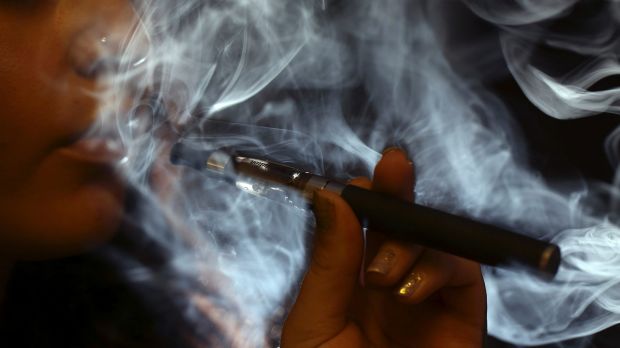Comment

Smoke clouds the debate over the safety of vaping. Photo: Bloomberg
So I suppose you heard about the latest e-cigarette study, the one that said that the vapours e-cigarette users inhale contain multiple forms of formaldehyde. It was much in the news last week, after its authors, five scientists from Portland State University, published a peer-reviewed letter outlining their findings in the prestigious New England Journal of Medicine.
“Before You Vape: High Levels of Formaldehyde Hidden in E-Cigs,” said the headline at NBC.com. “Can You Guess What Cancer-Causing Agent Researchers Just Found in Electronic Cigarettes?” asked The Motley Fool. “E-Cigarettes Not Safer Than Ordinary Cigarettes,” claimed the online publication Tech Times. The New England Journal of Medicine chimed in with a tweet of its own: “Chemical analysis of e-cigs’ vapuor show high levels of formaldehyde,” it read. “Authors project higher cancer risk than smoking.”
The study focused on a device known as a premium vapouriser that heats a flavoured liquid containing nicotine. The heat causes the liquid to turn into vapours, which the user inhales. Most of these devices also allow the user to control the voltage. These devices have become increasingly popular as a way to ingest nicotine without smoking.
In the study, the Portland State scientists ran the device at both a low voltage and a high voltage. At the low voltage, they did not detect formaldehyde. But at the high voltage, they found some. Formaldehyde is, indeed, a known carcinogen, which also exists, among hundreds of other toxic chemicals and dozens of cancer-causing agents, in combustible cigarettes. The authors concluded that someone who was a heavy user of a vapouriser at the high voltage was five to 15 times more likely to get cancer than a longtime smoker. Or so they seemed to say.
There is not much doubt that studies like this have an impact on the public perception of e-cigarettes. Even though cigarettes result in 480,000 American deaths each year – and even though it is the tobacco, not the nicotine, that kills them – many in the public health community treat e-cigarettes as every bit as evil. Every dollop of news suggesting that vaping is bad for your health, much of which has been overblown, is irrationally embraced by anti-tobacco activists. One result is that, whereas 84 per cent of current smokers thought e-cigarettes were safer than ordinary cigarettes in 2010, that number had dropped to 65 per cent by 2013.
Worse, close to a third of the people who had abandoned e-cigarettes and returned to smoking did so because they were worried about the health effects of vaping, according to a study published last year in the journal Nicotine & Tobacco Research.
The Portland State study fits right into this dynamic. It is, on the one hand, factually true that vaping at an extremely high voltage will cause formaldehyde-releasing agents to develop.
But this conclusion is highly misleading. People don’t vape at a high voltage because it causes a horrible taste – “a burning taste that occurs from overheating the liquid,” wrote Konstantinos Farsalinos, a Greek scientist and vaping expert, in an email to me. Farsalinos has done human studies of vaping and discovered that above a certain voltage – lower than the high voltage test on the Portland State study – people simply couldn’t inhale; the taste was unbearable.
Indeed, the study actually conveys good news. When used at normal voltage, vaping does not produce formaldehyde! “Rather than scaring people about the dangers of vaping and alarming them to the ‘fact’ that vaping raises their cancer risk above that of smoking, we should instead be regulating the voltage and temperature conditions of electronic cigarettes so that the problem of formaldehyde contamination is completely avoided,” wrote Michael Siegel, a professor of public health at Boston University, on his blog. But given the way the Portland State authors characterised their research, it’s no surprise that headline writers took away a different message.
When I spoke to David Peyton, one of the study’s authors, he insisted that the study had been mischaracterised. All it was meant to do, he said, was compare the levels of formaldehyde in e-cigarettes versus cigarettes. “It is exceedingly frustrating to me that we are being associated with saying that e-cigarettes are more dangerous than cigarettes,” he added. “That is a fact not in evidence.” Well, maybe.
When I read him the tweet from the New England Journal of Medicine – “Authors project higher cancer risk than smoking” – he sounded horrified. “I didn’t see the tweet,” he said. “I regret that. That is not my opinion.”
“There is a lot we don’t yet know about e-cigarettes,” said Peyton toward the end of our conversation. He is right about that; e-cigarettes are still so new that they need to be studied carefully. And he and his co-authors are planning further studies. Perhaps the next time, they will produce something that doesn’t serve mainly as a scare tactic to keep smokers away from e-cigarettes.
The New York Times
